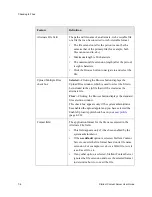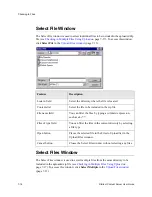
7-2
Stellent Content Server User Guide
Checking In Files
You can check in content items as:
❖
(page 7-8)
❖
A new file similar to an existing content item
❖
❖
P
RIMARY
AND
A
LTERNATE
F
ILES
When you check in a file, the native file is called the primary file. You have the option to
also specify an alternate file, which is typically one of the following:
❖
A web-viewable version of the native file. This is typically used when the native file
cannot be converted by the content server, or you want to convert the native file
manually.
❖
A file in a format that can be converted to a web-viewable file. This is typically
used when the native file cannot be converted by the content server, and you have an
alternate file format that can be converted by the system (such as PostScript).
❖
A file explaining what the native file contains. Typical uses include providing a text
file that describes the contents of a compressed file (such as a zip file) and supplying
documentation for an executable file.
For example, if you are checking in a Word document that has several graphics, you could
compress the Word file and all the original graphics into a zip file and then check in that
zip file as the primary file. As the alternate file, you could specify the Word document
itself (which could be converted to PDF by the Content Server), a text file that describes
the contents of the zip file, or a PDF file that you created manually.
Note: The file extension of the alternate file (after the period) cannot be the same as that of
the primary file (for example, both files cannot end in .doc).
Summary of Contents for Content Server
Page 1: ...Content Server User Guide SCS EN1 710...
Page 112: ......
Page 188: ......
Page 198: ......
















































